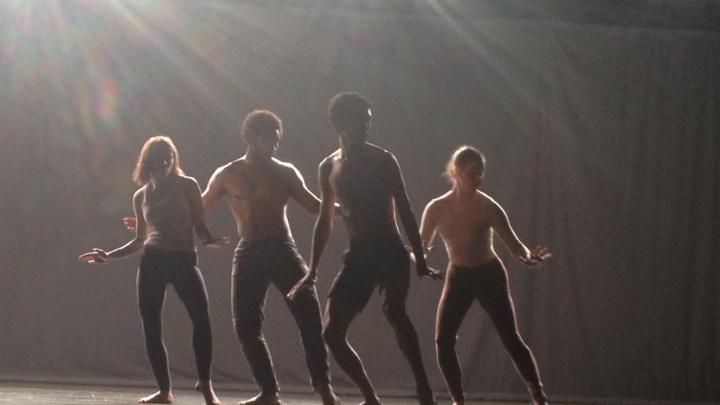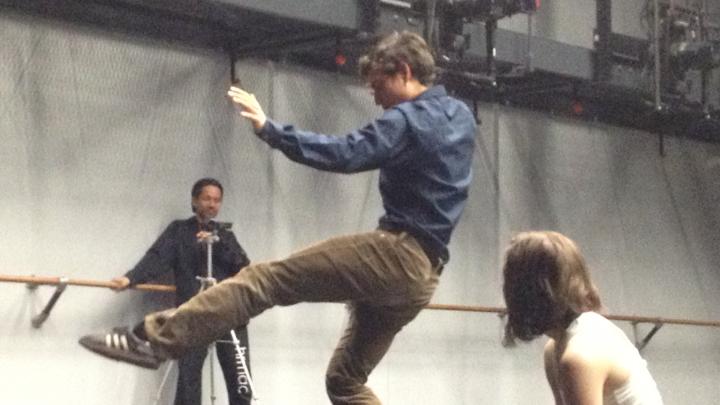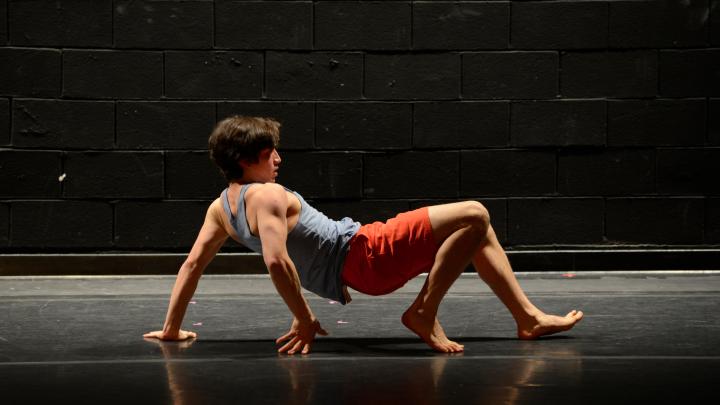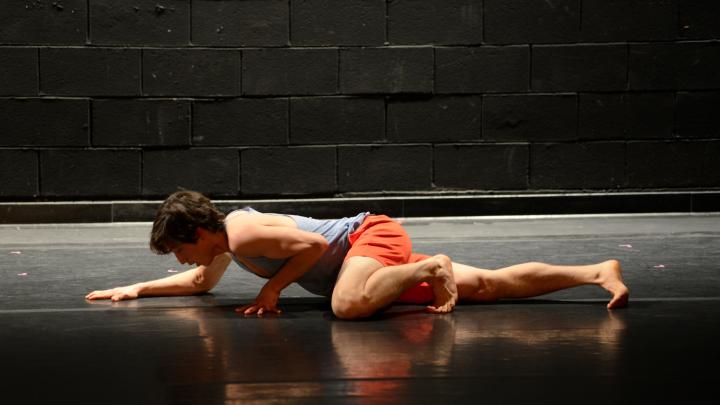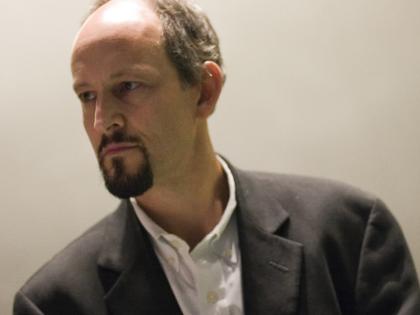At the Harvard Dance Center in April, at an evening showcasing the work of emerging choreographers, Irineo Cabreros’s “Quartet for the End of Time” stood out. There was the unusual score, combining mournful classical music with something that sounded like snarling feral dogs. There was the choreography, which included dancers moving their bodies in a driving, iterative rhythm—in disconcerting counterpoint to the music. And there was the post-performance discussion, which ranged from science to religion, and from prostration to apocalypse.
Finally, there was Cabreros himself, a dual-degree student whose range includes the practice of classical flute and, through WorldTeach, the teaching of physics and math in Namibia; he will earn a bachelor’s degree in physics from Harvard this spring, and a master’s in flute performance at New England Conservatory next year. In the short time since Cabreros started dancing, two years ago, he has distinguished himself not only as a fine performer, but also as a sophisticated choreographer and sought-after collaborator, impressing students, faculty, and even visiting artists with his graciousness and breadth of mind. This spring, he was awarded Harvard’s annual Suzanne Farrell Dance Award for “outstanding artistry in the field of dance.”
Dance program director Jill Johnson, asked about Cabreros, notes his curiosity first. “He was remarkable,” she says about working with him in fall 2011, her first semester at Harvard. “He has a dexterity and a beautiful, curious mind. He has a special way of synthesizing multiple things, which in a way is like all of his different talents—I think they’re all interconnected.”
Until recently, Cabreros says, he was “pretty set on becoming a concert musician.” A Florida native, he became serious about flute performance by eighth grade and went to high school at Interlochen Arts Academy in Michigan. There a teacher got him “hooked” on physics, he says, an interest he continues to pursue avidly at Harvard because it made sense “to major in what I was most interested in.”
Getting involved in dance, he says, was “a complete fluke”: during his sophomore year, he ran into a friend who was going to an introductory meeting of the Harvard-Radcliffe Modern Dance Company, and tagged along. He decided to audition, though he had no previous experience in dance, and began working with one of the “Quartet” dancers, Halimeda Glickman-Hoch ’12, on a piece she created.
Speaking about “Quartet,” Cabreros reveals a passion for asking questions, exploring the world, and finding beauty. He used a participatory process to create “Quartet,” asking his dancers to think about different forms of prayer for one rehearsal, and, for another, to bring in a question about how something works. The dancers (who, as it turns out, are all scientists themselves: Glickman-Hoch studies mathematics, Nazc-a-ru Gonzalez ’14 psychology, Rebecca Neumann ’16 statistics, and Rossi Walter’14 history of science) then discussed the material—and plenty of Big Ideas—translating thought into movement, and piecing together the final work bit by bit.
“Rehearsals were like a sitcom,” Cabreros says. “Hali’s the mathematician, worried about everyone’s orientations and being synchronized, and then Rossi’s like, ‘I think of it like a whirlpool”—so metaphors galore. The piece is the product of these people.”
Cabreros set the work to, and took its name from, a haunting piece that composer Olivier Messiaen wrote while interned along with a clarinetist, a violinist, and a cellist at a German prison camp in 1940; the quartet, including Messiaen on piano, performed the work for fellow prisoners in 1941.
Cabreros’s “Quartet” begins with the four dancers intertwined in a grueling sculptural arrangement in one corner of the room; gradually, using one another, they push and pull themselves upright, giving a sense that a shared commitment to one another, while somewhat burdensome, is more help than hindrance. The growling sounds—recordings of whale communication—suggest a primal atmosphere or the dawn of the world.
Throughout the work, dancers break away to perform articulated, often anguished solos, but always return to the group, and to the rhythmic refrain that gives the piece its driving force, often in counterpoint to the music: an exhausting sequence in which the dancers’ feet pound out a relentless beat, accentuated by breath sounds and finger snaps, in a marchlike movement that leads to a plaintive, almost ecstatic reaching of arms to the sky, as in prayer or rejoicing.
The work is so affecting, moving, and suspenseful that one audience member later said that she felt she couldn’t breathe properly while watching.
Among the things that make the work so successful, Johnson says, are its “sense of scale, temporal changes, counterpoint, pushing and pulling, changing space”—which may result from Cabreros’s musical training, and from science. “It’s my view that you can’t teach someone to choreograph, but you can certainly give them tools, and elicit in them what their tools are, too,” says Johnson, who was a mentor for the project. Cabreros is “testing things out, and he’s courageous and curious, so he just dives in and it makes sense to him.”
Cabreros, for his part, doesn’t see much connection among his different pursuits, except that they’re all “really beautiful subjects.” For now, he plans to stick with all three, continuing both dance and research next year as he earns his master’s. “I guess I’m going to keep doing things I’m interested in at a really involved level,” he says, “and see where that takes me.”
